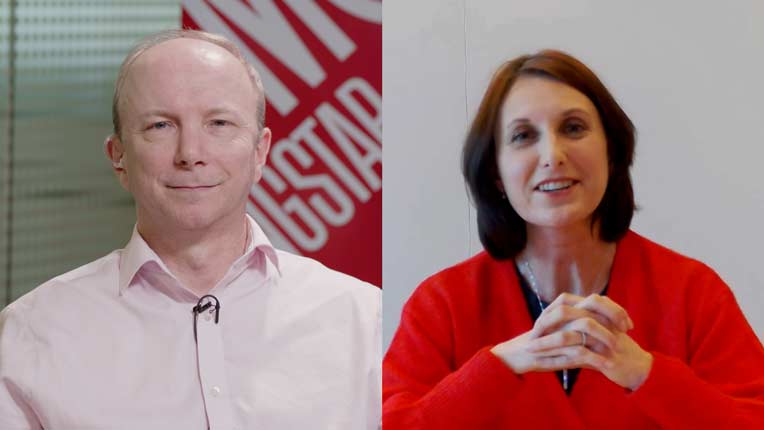When it comes to building a portfolio, there are no right answers.
Assembling a fund portfolio is largely a matter of personal taste. How to invest depends on who is doing the investing. We would love to say that we know how to create the perfect portfolio—what funds you and everyone else should buy, and in what proportion, to meet each and every one of your goals. We would like to give you the model portfolio that will allow you and everyone else to retire at age 55, to buy that second home, to send your children to university. But we can't. There is just no one-size-fits-all answer. There is no one "correct" way to build a fund portfolio.
Putting together a group of funds is a matter of personal preference and personal goals. But there are some universals you should think about when choosing and combining funds.
Define Your Objectives and Your Priorities
This step is probably the toughest part of the investing process: sitting down to figure out why you're investing, what you're investing for, and how much money you'll need to reach that goal. Your goals and your risk tolerance should then determine what your portfolio looks like.
Keep in mind that your goals and your stomach might not agree. You may find, for example, that the idea of losing 20% in one quarter makes you nauseated, but you need to invest aggressively to have a shot at accumulating the return you'll need to reach your goal. If so, you will need to compromise by accepting the risk, changing the goal, or saving more.
Time plays a part, too. If your goal is to retire in 30 years, you might be more willing to put up with short-term ups and downs if it means reaching your long-term goal. If you suffer a loss, you have time to make up for it. But if your goal is just five years away, taking on more risk might not be a good idea, because you have less time to make up for any losses.
Develop a Core
For each goal you have identified, you should have a core group of three or four funds that are proven performers. The bulk of your assets—typically 70% to 80%—should be invested in these core funds.
What are core holdings? They're the engines of your portfolio, the investments that you can count on to deliver year in and year out. Funds that fall into Morningstar's large-blend or large-value categories tend to be the best core investments for meeting your long-term goals. For shorter-term goals, consider short- or intermediate-term high-quality bond funds. Simplify the investing process by focusing on a few funds that can deliver what you want, and build your investment in those funds rather than adding other funds.
When looking for core funds, simple rules prevail. The more boring, the better; the goal is steady gains, not excitement. Look for funds with low fees, long-tenured managers, easily understandable strategies, moderate risk, and consistent performance. This article provides additional information on finding a good core fund.
Limit How Much You Put Outside the Core
Noncore holdings are the stop-and-go funds that may juice up returns—funds that focus on a single industry or emerging markets, and funds run by managers who make large bets on particular holdings or on certain parts of the market. Small-cap funds could also fall into this category, simply because they tend to be more volatile than large-cap funds. Use noncore funds for diversification and growth potential. For instance, if your portfolio's core is made up of large-cap funds, you might want to add small-cap, international, or sector funds to the noncore portion of your portfolio for diversification. As we discussed in a previous article, a variety of funds improves the likelihood of at least one of your investments doing well at a given time.
Though you probably wouldn't want to put a significant portion of your portfolio in any one of these types of funds, they do allow for the possibility of extraordinary returns. Of course, they also generally carry a higher level of risk. But as long as you limit the riskier portion of your portfolio, you aren't likely to threaten the bulk of your nest egg. And for some people, core funds may be all they ever need
Don't Worry About an Optimal Number of Funds
There is no ideal number of funds to own. We have seen fund junkies build 30-fund portfolios while other investors can be perfectly diversified owning just two or three funds.
What you should worry about is how diversified your portfolio is, regardless of how many funds are in it. If all of your funds were growth funds or were heavy on a particular sector, you could own dozens of funds and still not be adequately diversified. Conversely, a one-fund portfolio could be better diversified than a multifund portfolio, if that one fund were an index fund covering the entire stock market.
Before adding an investment to your portfolio for diversification's sake, run your portfolio through the X-Ray tool on Morningstar.co.uk and see how diversified your holdings really are. Then type in the investment that you want to buy and see what happens to your portfolio's overall profile. Did the new fund add the diversification that you had hoped it would? If not, ask yourself if you really need this new fund.
Consider your tax situation
Are you investing in a tax-deferred account, such as pension account? If not, recognise that you'll be paying taxes on any income and realised gains from your funds. And remember, if you are investing in a taxable account, look for funds that generate strong aftertax results.



























